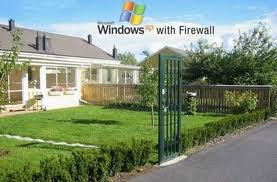
Windows Firewall acts as a protective shield for your computer against possible safety intrusions. It is highly effective in blocking computer worms and viruses from reaching the computer and making unauthorized changes and "stealing" information. It is worth noting here that Windows Firewall protects your PC by five services: packet filtering, application filtering, proxy server, circuit-level, and Stateful inspection. Firewall prompts the user to accept or decline certain connection requests so that PC security is not compromised at any stage and all operations are authorized, to say the least. In other words, PC users can specify rules for source and destination IP addresses and port ranges.
It is, however, important to note that Windows Firewall does not block spam or unsolicited emails. Firewall also does not stop PC users from opening emails that can include dangerous attachments and doesn't detect or remove computer worms or viruses. It is, therefore, recommended that PC users must install powerful antivirus software and update the same on regular intervals so that PC security is not exposed before threats.
Now that we have read about Windows Firewall and its importance, it is now time to read what to do in case the very purpose of Windows Firewall, PC security, is defeated by an intrusion.
In case you are experiencing problems with Windows Firewall, you can always refer to computer troubleshooting service. This will help you identify the problem and even treat in some cases. In case the intrusion is severe, it is highly recommended that you opt for professional computer help desk service. This computer support service can be accessed for free or little cost from a reliable computer tech help provider.
If you are not aware of any such providers, you can go online to find a provider specializing in such services. For this, you need not make any special efforts. You can just search engines such as Google, Yahoo!, or MSN and type words such as "computer support service", "computer tech help", "computer troubleshooting service", or "computer help desk service". You will be redirected to sites of computer support service providers and then you can compare and choose from the available options. It will now be time to clarify any doubts (if any) from the provider and setting the computer tech help terms so that things are simplified for a better understanding.
Read more: http://goo.gl/F9KYB